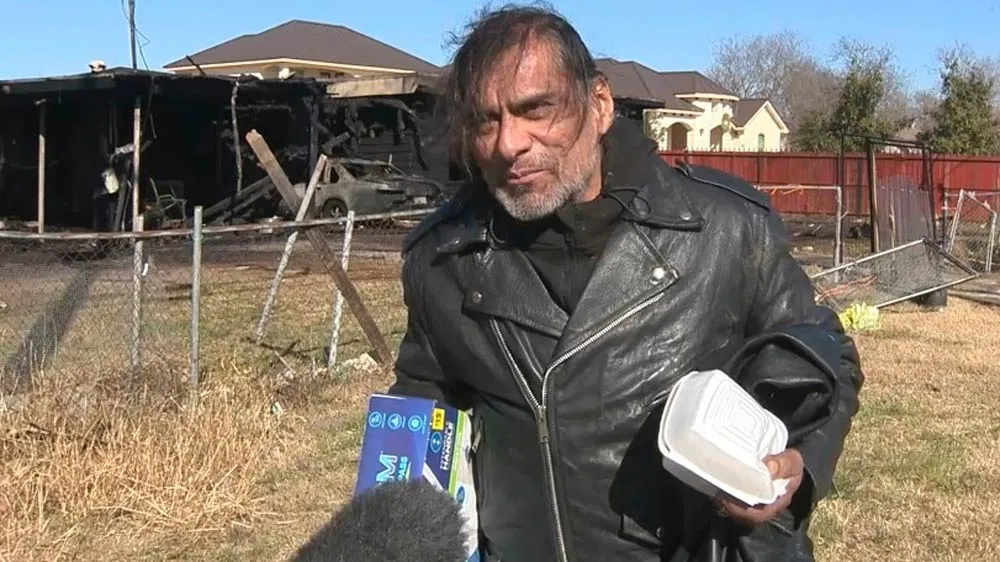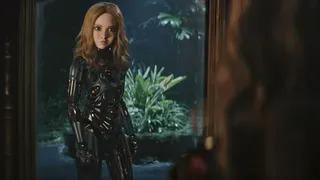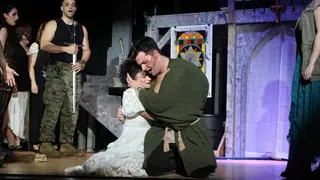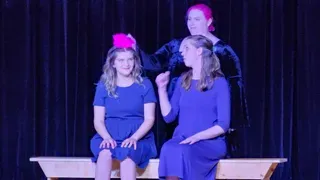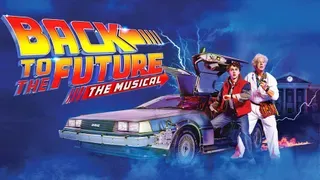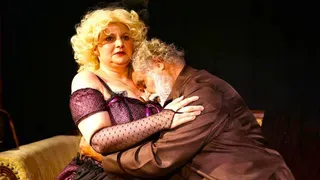October 5, 2010
Stonewall Uprising (Fort Lauderdale Gay & Lesbian Film Festival)
Kilian Melloy READ TIME: 4 MIN.
Kate Davis and David Heilbroner, the co-directors of Stonewall Uprising, are upfront about the fact that there's a paucity of images and footage from the first night of the Stonewall riots. The film presents a single photograph from the opening act of what would turn out to be a watershed moment in the history of GLBT America; everything else, we're told, will be re-creations and images drawn from the same general time frame to give us a sense, visually, of what the social and political situation was like when, on June 28, 1969, the patrons of a gay bar on Christopher Street in New York's Greenwich Village got fed up with their role as the passive minority in an era when other minorities--blacks, teenagers--were rising up and fighting back.
Footage from "educational" films that warn school kids about the "dangerous and contagious disease" of homosexuality certainly do impart a sense of just what gays were up against at the time. So does a clip of a leader for gay rights who talks about himself as some sort of ex-gay or reformed homosexual, calling gay sex something that is "not my cup of tea," and assuring the camera that gay Americans don't want anything as outrageous as, say, families of their own and the legal right to pursue domestic lives without government interference or persecution.
The film places the riots in a political context. Gays were a safe group for the powers that be to harass, to score points with a jittery public; as one man who was there says, "Who was gonna complain about a crackdown on gay people? Nobody. Not even us." Gays fighting back was inconceivable--until it happened. The precipitating event was not just the police raid, the film tells us, but the manner in which one lesbian in particular was being manhandled by the police. There's a sort of traditional gallantry to this version of events: a lady being roughed up by cops sparks a response from a male crowd, even if the lady was something of a tough and the onlookers were gay men and drag queens.
But once the cork popped, bottled-up rage erupted: "They must have been terrified," muses one participant in the night's events about the police who were suddenly under siege. "I hope they were," he continues. "It pays back a little of the terror in my life." But the Stonewall riots weren't simply a spasm of blind destruction; they were, one individual observes, a full-on revolt by people long oppressed: "They really were objecting to how they were being treated, and that's an uprising." Agrees another man, "For the first time... I stood up. I was a man."
Gays weren't the only ones who responded: straights, too, offered their support. Recalls one interviewee, "My father said, 'It's about time you fags rioted!' "
There are images from the subsequent nights of the riots, and the black-and-white re-creations, while executed simply, get the point across: lost of men staring at their feet or covering their faces in shame. But it's the plethora of interviews with people who were there when the riots broke out that are truly illuminating: gay men who frequented the Stonewall Inn not for the drinks (the Mafia-owned establishment served watered-down booze that had been stolen in the first place, we're told), but rather for the dancing, a chance to hold and be held and feel like there might be a trace of love in the world for them; the drag queens, who confronted the cops--used to dealing with angry, aggressive mobs of anti-war protesters or civil rights demonstrators--with jokes and maybe even a little burlesque; even a retired vice cop appears in the film, to talk about the unheard-of phenomenon of gays backing down the police, something that rattled the officers so badly that they barricaded themselves in the out of some sort of gay panic.
The film details how, in an age long before cell phones and flash mobs, a relatively sparse crowd of protesters kept the cops off balance simply by racing around the block in order to appear to be coming at the authorities from every side. The first night of rioting was only the tip of the iceberg: though the bar was trashed, it was quickly repaired and open for business the very next night--just in time for a renewed round of rioting.
The riots served as a seed crystal, instantly transforming the attitudes of gays across the country, electrifying emergent GLBT equality groups, and giving rise to the annual events we now call Pride. Indeed, that's the other thing this charming, compelling documentary offers: a swelling sense of pride in the GLBT community for casting off chains of abuse and pathologization. Think you're tired of hearing about those long-ago riots? This documentary from PBS American Experience restores a sense of admiration for the brave souls who finally stood up and proclaimed that they'd had enough--and re-energizes a sense of urgency for the work that remains to be done.
Kilian Melloy serves as EDGE Media Network's Associate Arts Editor and Staff Contributor. His professional memberships include the National Lesbian & Gay Journalists Association, the Boston Online Film Critics Association, The Gay and Lesbian Entertainment Critics Association, and the Boston Theater Critics Association's Elliot Norton Awards Committee.
